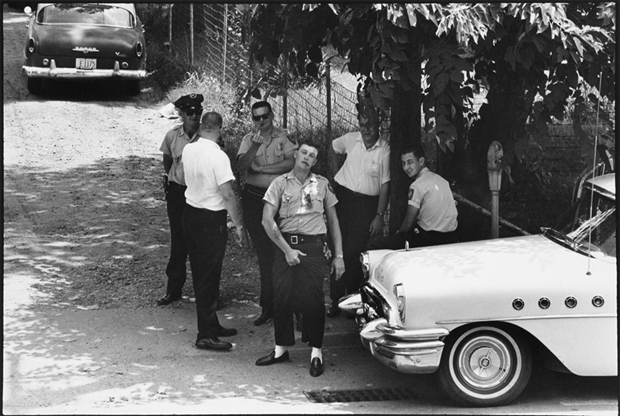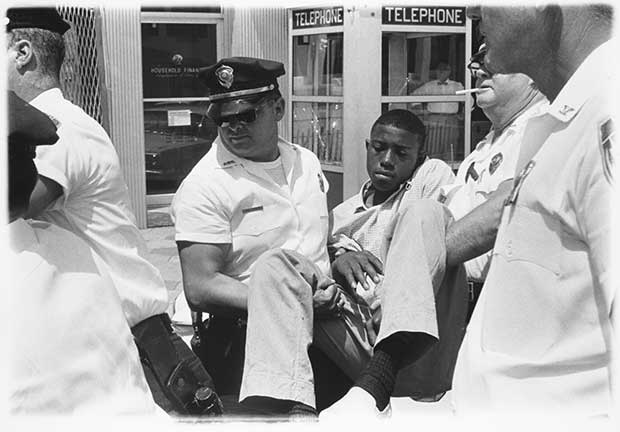
When Danny Lyon was just two dogs in
The photographer's 1962 work, shot in the South, was an early example of a burgeoning confrontational style
"It is easy to forget that in the main, we die only seven times more slowly than our dogs.” This rueful quote from Jim Harrison provides the title for Danny Lyon’s The Seventh Dog, the wonderful retrospective of his life’s work he has put together having passed his seventieth birthday.
Lyon’s pictures reflect his agitating, idealistic desire to change the world rather than just make pictures of it. He has arranged the book in reverse chronological order, so to find his earliest photography, when he was barely 20, we must proceed to the closing pages of the volume. In Clarksdale, Mississippi, for example, he captures an image of a group of menacing looking white men, gathered around a Buick under the shade of a tree. A couple of them spot Lyon, despite his use of a telephoto lens (referred to as his 'cheater'), snapping prudently from a nearby church. One flips him the middle finger; another leers at the camera, grabbing his crotch. Depressingly, these are members of the local police force, on duty near a church where a civil rights march involving black and white ministers had just concluded.
The twitchy boorishness of the white officers contrasts starkly with a picture he took in Albany, Georgia around the same time, in 1962. It’s of Eddie Brown, a young black gang leader arrested following a sit-in with a white student at a racially segregated drug store. Brown’s expression of serene stoicism as he is carried away by two cops speaks volumes about the spirit of the Student NonViolent Coordinated Committee, for whom Lyon made these pictures. Only two dogs in, so to speak, and Lyon was producing some of the best work of his career.

As he writes in The Seventh Dog, "Forty years later with my son Noah, I returned to Greenwood for a blues concert. Eventually we found the old church. It was a small red brick building, much smaller than it was in my memory, with just three or four steps to raise it above the street. A policeman came by to talk. He was African American. So was the entire force."
You can find many more fascinating stories - and of course, many more breathtaking photographs - in the The Seventh Dog which takes the form of an original artist’s photobook featuring Lyon’s own writings, collages, letters, documents and colour and black-and-white-photographs – many published for the first time.
This is Lyon’s personal story of his photographic journey; starting in the present day and moving back in time, it features recent work such as Occupy (2011) and Indian Nations (2002), as well as classic series from the 60s and 70s, such as Bikeriders and the aforementioned Texas Prisons. It also includes a new essay by Elisabeth Sussman, a Curator at the Whitney Museum of American Art. Take a look at, and learn more about, The Seventh Dog in the online store.